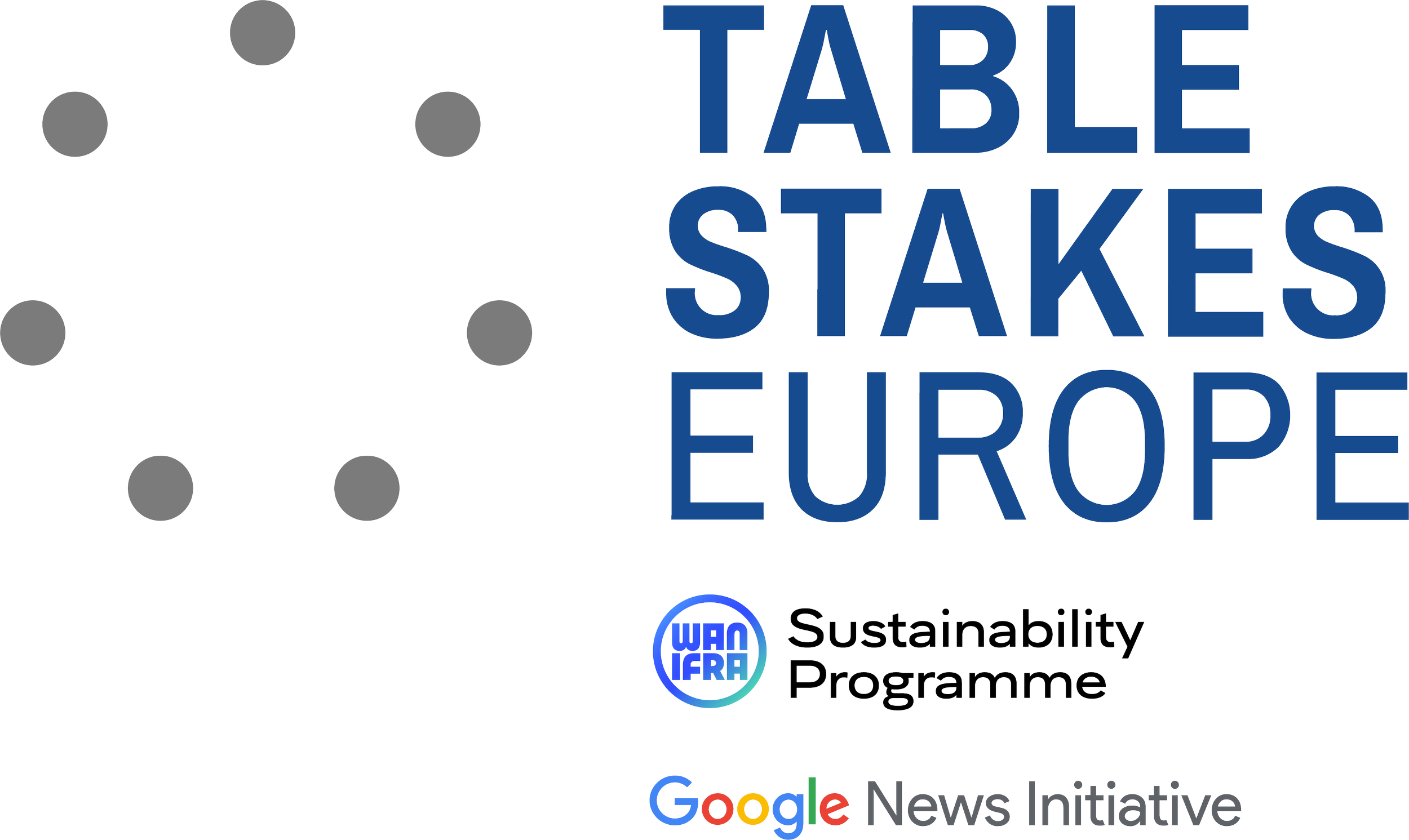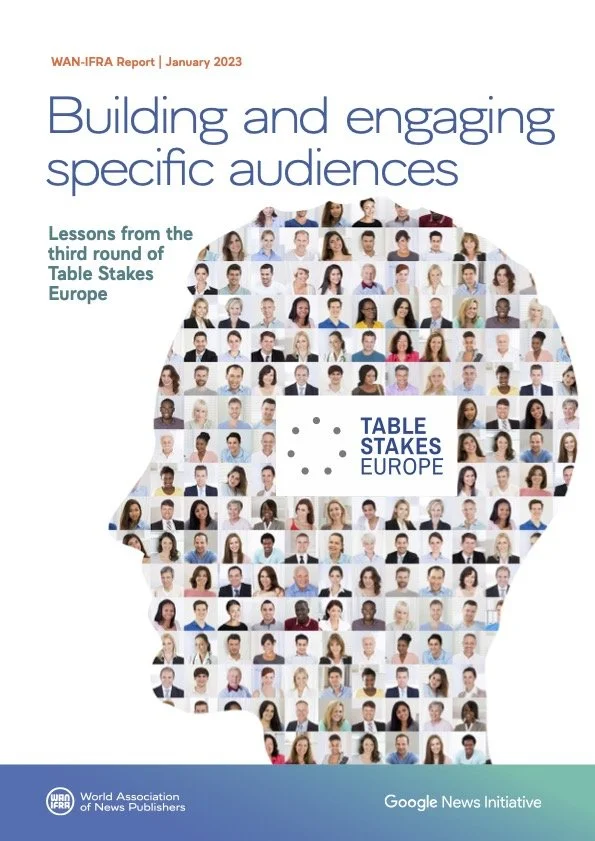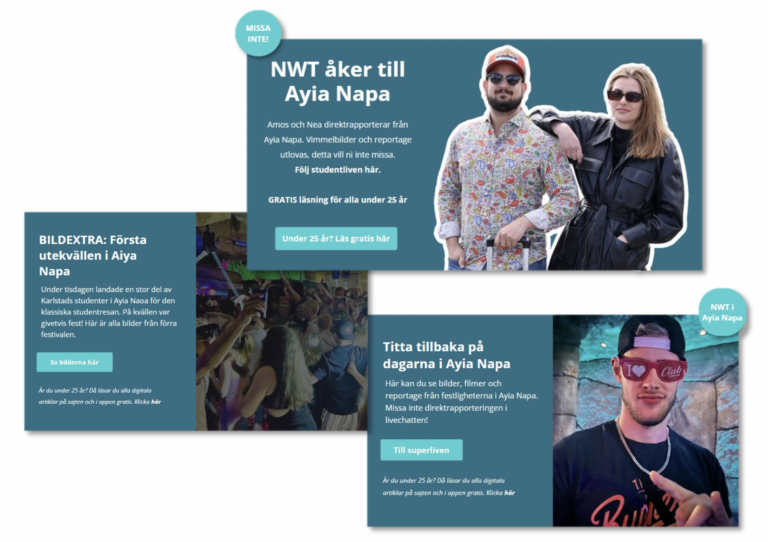How to engage specific audiences – Lessons from Table Stakes Europe
Our recently published report features winning strategies that news publishers used to reach out to key audiences during their participation in the Table Stakes Europe programme. The report includes 15 case studies – here we highlight some specific takeaways from them.
During 2022, a group of European news publishers transformed their internal workflows, jump-started their digital transformation, and created new audiences-first editorial products as part of their participation in Table Stakes Europe, a WAN-IFRA programme in partnership with Google News Initiative.
Our recent report features 15 case studies from the programme, documenting how the participating teams embraced an audience-driven mindset, chose specific target audiences, and started to produce journalism that serves their needs.
The full report, which is available for free and in four languages, is packed with practical advice from real-world cases that publishers can use to identify and reach out to their own target audiences.
Below are some specific themes and learnings that arise from the case studies included in the report.
When choosing a target audience, be very specific
Many Table Stakes Europe (TSE) teams entered the programme wanting to reach more “young readers” – but soon realised they had to be more precise with what they really meant by “young” to effectively engage that audience.
The Swedish newspaper NWT, for instance, initially wanted to reach under 45-year-old readers. But after further reflection, the team divided this target audience into two groups, 1) 18- to 29-year-olds, and 2) 30- to 45-year-olds.
This permitted the company to set up precise strategies and goals for each target group. For 18- to 29-year-olds, the strategy emphasised brand-building, which the publisher pursued by producing journalism about entertainment, relationships and careers.
The aim for 30- to 45-year-olds, on the other hand, was mainly to drive reader revenue as this group was seen as having more potential for digital conversion. For this age group, NWT focused on stories that relate to their life situations, such as journalism about restaurants, real estate and family life.
Across the TSE teams, the precise definition of a target audience was a recurring theme also with regard to other chosen audiences. In sports, for example, many teams zeroed in on local sports fans in their regions and aimed to figure out their specific interests and passions.
For example, La Voix du Nord, a newspaper based in Lille, France, decided to focus particularly on the dynamic local amateur football scene (there are almost 1,000 amateur clubs in the region). Through its sports-focused title La Voix des Sports, the publisher decided to cover 60 of the largest clubs, multiplying the volume of content on amateur football on its digital platforms while also highlighting women’s amateur football specifically in its coverage.
Think of your readers as collaborators
In addition to reaching out to new audiences, many TSE teams aimed to build two-way relationships with their readers and worked to set up new methods to ensure an ongoing exchange with them.
The German newspaper Zeitungsverlag Waiblingen (ZVW), set up a dedicated reader panel with 45 parents from the region, which allows the publisher’s family team to interact easily with their readers through a messaging app (for example Telegram or Signal).
In addition to receiving valuable feedback on their journalism, ZVW’s family team has been able to gather insights on what topics interest this target audience as well as collecting input that informs the stories they are working on.
In the UK, the team from BirminghamLive focused on two groups during their TSE participation: families and the local Muslim community. At their core, both initiatives are based on deep audience engagement and a two-way relationship with the readers.
For instance, “Brummie Muslims,” BirminghamLive’s newsletter aimed at the diverse Muslim community living in the West Midlands region, has become the fastest growing newsletter across the company’s offerings, partially due to input from members of the community.
Seek out partnerships
TSE participants are also encouraged to form partnerships with organisations that have existing ties with the audiences they want to engage. Such collaborations can be beneficial for all parties while providing important support when reaching out to a target audience.
Tribune de Geneve successfully used this strategy, having decided to focus on the people who commute regularly between France and Switzerland. The project team started discussions with the local association Groupement transfrontalier européen, which has a membership of 27,000 cross-border workers, while also approaching other specialists on related issues (legal, mobility, taxes, insurance…).
These partnerships have led to regular contributions from the experts in exchange for the visibility that the contributing organisations get through Tribune de Genève’s platforms.
This is just a snapshot of some of the learnings included in “Building and engaging specific audiences: Lessons from the third round of Table Stakes Europe.” Request your copy of the report in your choice of four languages HERE.




